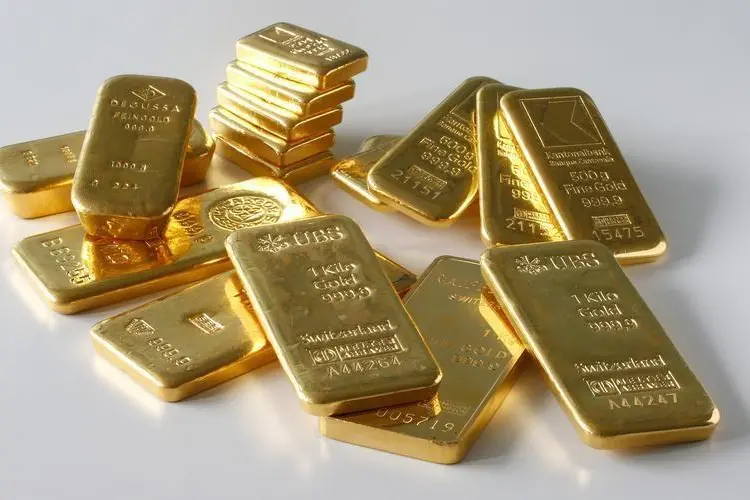PHOTO
One of 2021’s most persistent stories was the Federal Reserve’s gradual acceptance of inflation as more than just a transitory phenomenon. We watched the central bank’s stance change from dovish to hawkish as a bull market in risk assets accelerated. Plenty of column inches and airtime minutes were also devoted to the gold question of why the precious metal was underperforming in an environment seemingly tailored for it to shine.
It’s not about crypto
You’ll recall that crypto assets were booming at the time, and that bitcoin appeared to be a potential drag on gold. Bitcoin, after all, was designed as the ultimate inflation hedge, specifically as a safe haven in an environment of rampant monetary expansion. But bitcoin is still a relatively young asset that has only just seen institutional investment; as such, it’s still difficult to say exactly what it is.
Consider that during the first public crypto bull market, bitcoin had been touted as a global payments system. Scaling issues caused this narrative to be abandoned post-2018, and in 2019, the new focus became bitcoin as digital gold.
However, as we’ve seen, this too came into question throughout 2021. Over the course of the year, it became clear that bitcoin and the rest of the crypto market were in fact moving in lockstep with risk assets, rather than offering the kind of portfolio protection investors believed they should.
Back to gold
It’s important to understand that not all the conditions were present in 2021 for gold to perform. The uncertainty was definitely there due to ongoing waves of the pandemic, and inflation was obviously on the rise, despite repeated efforts to play it down. However, the dollar was also stirring after the DXY bottomed in December, and real yields were confined to a half percent range throughout the entire year, having already seen two years of more or less consistent declines.
Furthermore, inflationary pressures notwithstanding, economic growth (real or as a result of base effects) was also a persistent headwind to gold since it topped out over $2000 in August of 2020. Inflation and growth side-by-side provided the fuel for risk assets to fly, and an attitude prevailed among fund managers of not fighting the trend despite reservations to the contrary. Inflation, in combination with a slowing economy, is where gold really starts to make sense in a portfolio.
Geopolitics on centre stage
Markets received a severe shock at the end of February. Events that surprise almost everyone are few and far between. Russia’s invasion of Ukraine is certainly up there with the results of the Brexit referendum and Trump’s election. Prior to the aggression, the worst the market had to fear was the Fed’s withdrawal of liquidity and the raising of rates faster than it could handle. A news cycle now dominated by talk of explosions and boots on the ground has us in a completely different world going into the spring.
Back to gold again
Superficially, this goes some way to explaining the recent move in gold. You can’t discount the power of the headlines. In the span of two weeks, it appeared to break out of a trading range that dates back to December, 2020.
However, news-related moves can be short-lived as they’re difficult to sustain. Gold went on to return most of those gains, closing the week out below its February 14 high at $1900. The reason for this was that real yields dropped sharply as bids came into bonds, while inflation remained elevated. For confirmation of anything more than a short-term move, bulls would like to see real yields continue lower and the USD moving lower too. Currently, the $1900 level is key, as it marks the weekly high on Feb 14 as well as the weekly high on May 24. A dip below $1900 brings November’s $1870 weekly lower-high into play and the prospect of a lengthier consolidation.
Final considerations
The invasion of Ukraine takes all certainties off the table. The removal of some of these certainties, such as seven Fed rate hikes in 2022, could potentially provide a tailwind for gold. This is because yields would tumble and, if inflation remains elevated, that would be the drop in real yields that gold bulls will want to see. Whatever the West’s response, an already fragile global economy has just been dealt another blow and it’s hard to imagine a scenario where ongoing tensions with Russia don’t come with real economic consequences. This all comes when growth expectations have already been slowing. Add to this the situation in the broader commodity complex, and there’s a lot of evidence to suggest that gold is only getting started here.
As always, caution is advised; there is no need to chase these moves, particularly if you’re unfamiliar with trading this market. Metals & mining stocks are another way to gain exposure if you don’t feel comfortable with trading the underlying, and they come with the added benefit of lagging the performance of physical gold as they have yet to reclaim their 2008 highs.






















